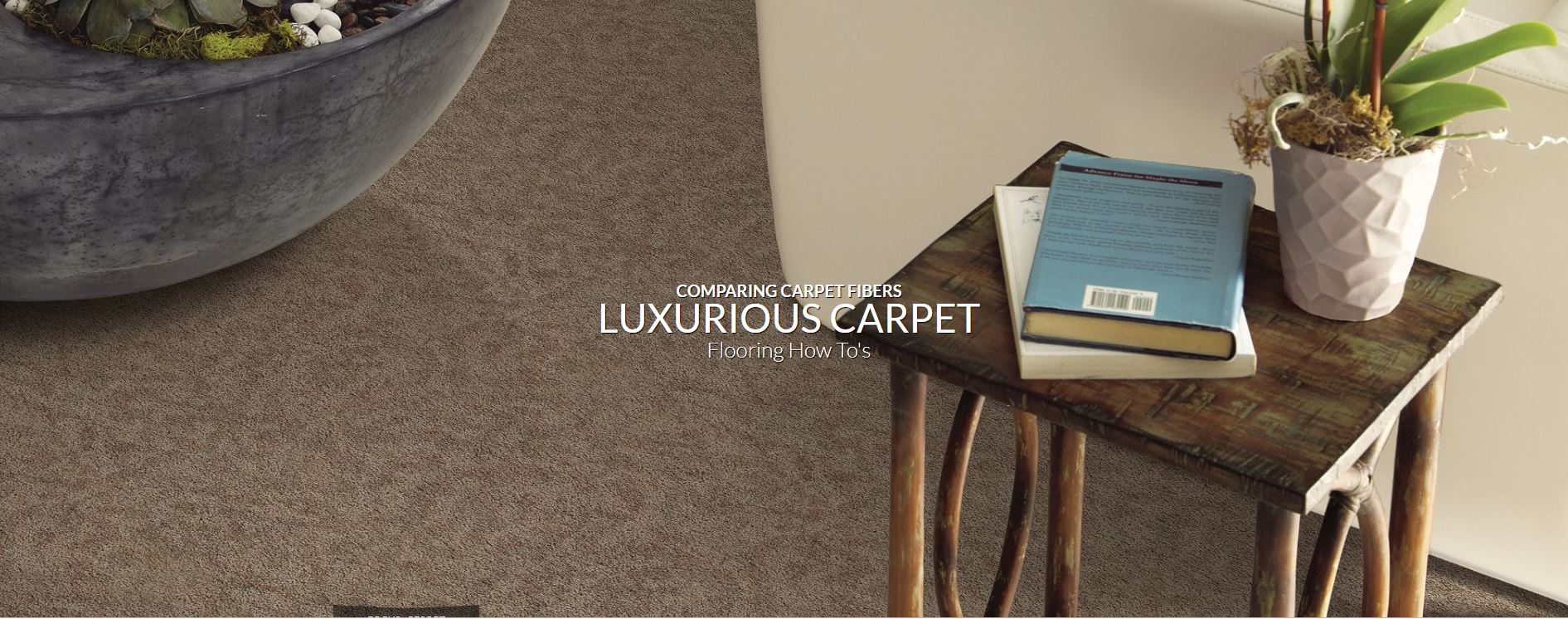Carpet Fibers
Comparing Carpet Fibers
There are four basic fibers that are used for manufacturing purposes. While all fibers have a place, unique characteristics could make one option a better choice vs. another. It is our goal to understand your objectives; style, budget, and quality while offering practical advice and long term solutions. Trained consultants offer expertise in the comfort of your home. Quality is easy to define when working with official mill samples that have not been relabeled.
Although some carpets are made of blends, most are made entirely of one of the following four fibers:
| Fiber | Nylon | PET | PTT | Polypropylene |
| Style Options | Excellent | Excellent | Fair | Fair |
| Color Options | Excellent | Excellent | Good | Fair |
| Soil Resistance | Excellent | Excellent | Fair | Poor |
| Stain Resistance | Excellent | Excellent | Excellent | Excellent |
| Texture Retention | Excellent | Excellent | Good | Fair |
Nylon Carpet Fibers and Polyethylene Terephthalate (PET)
In overall performance characteristics, nylon and PET are the most versatile of all fibers, providing excellent durability and flexibility in creating a variety of carpet styles. They are the most commonly used carpet fiber and can be found in a wide range of both cut pile and loop pile styles. Nylon is the oldest fiber and pioneered the industry years ago. There is a plethora of information on characteristics and performance. It’s test and true.
Shaw’s premium branded Anso nylon is also Cradle to Cradle Silver Certified, meaning its design has been evaluated to assess its positive impact on both people and the environment. The Cradle to Cradle certification process looks at a number of factors, including the use of environmentally safe and healthy materials, design for recycling, water and energy efficiency, and social responsibility.
Polyethylene Terephthalate (PET) Carpet Fibers
There was a huge consumer outcry for green/pure products. Over the last decade the mills committed millions of dollars to research and development. The result was PET that offers the following; toughness enhanced colors, performance, softness and value.
Polypropylene (olefin) Carpet Fibers
Unlike other fiber types, polypropylene will not absorb water, so it is solution dyed. Solution dyeing is a process in which color is actually built into the fiber when it is formed making the color an inherent part that cannot be removed from the fiber. This means the color will not fade, even when exposed to intense sunlight, bleaches, atmospheric contaminants, or other harsh chemicals or elements.
Polypropylene is normally used in loop pile construction in which there is less need for resiliency because it is not as strong as other fibers.
PTT (Triexta Polyester) Carpet Fibers
PTT (Polytrimethylene Terephthalate) is a polyester fiber, first patented in 1941, but it was not until the 1990s, when Shell Chemicals developed a low-cost method of producing high-quality 1,3-propanediol (PDO), the starting raw material for PTT polyester, that commercial production
of the company’s Corterra polymers was possible. Shaw introduced the first BCF PTT (Corterra) residential carpet in the United States in 2001. PTT features good resiliency and excellent inherent stain resistance. Recently, some manufacturers have begun applying a topical treatment to PTT carpets. While adequate for staining, PTT still attracts dry and oily soil substances, leading to premature wear in high traffic areas. For this reason, many oil-based stains are extremely difficult to remove.

